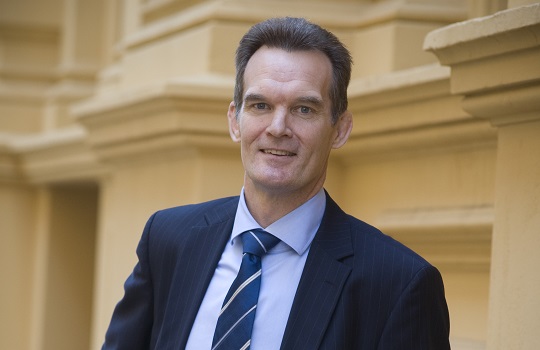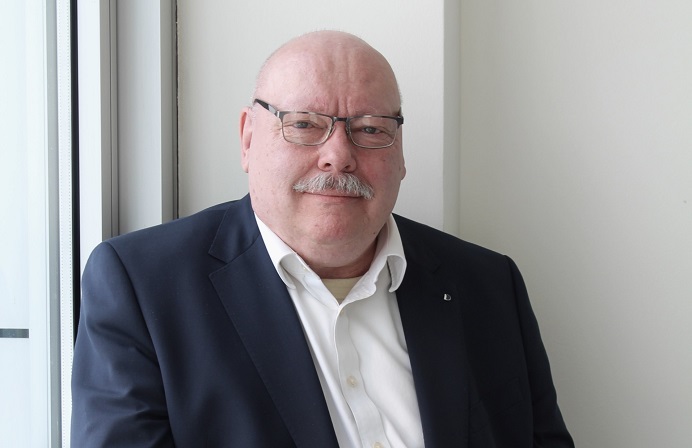
FST Media: What are your IT priorities for the next 12 to 18 months?
Sims: Mobility is a big game-changer for us, and that reflects what our customers are using and how they are accessing our services. If I use our mobile application, goMoney, as an example, we have seen a fourfold increase in activity in the last 12 months. In last July alone, 10 million log-ons were recorded through the goMoney application, and we know that over 50% of our customers are now accessing us through mobile devices. Mobility is going to be big now and in the future, and that is why we always design our products with a mobile-first approach. Payments and mobility are logical bedfellows. We support mobile with a focus on big data, payments, mobile wallets and all the near-field communications technology. We are looking to innovate in the payments space and big data is key – banks have a lot of data, and customers give us a lot of information. The key consideration here is how do we use that data to personalise our services for our customers? Our focus is on how we use mobility and how we use big data on payments to create a great customer experience.
FST Media: How has ANZ’s Systematics core banking platform enhanced customer centricity?
Sims: We did the brand merger of ANZ and National Bank two years ago now, which moved us onto Systematics. That was done to get closer to our customers, and we are seeing the benefits of that. We are now trying to modernise our banking system to support the best platforms – Bank of New Zealand and Systematics, our core banking platform, are key to that modernisation. We are just in the process of upgrading our core. In the last month, we have just upgraded the loans on the customer side. Next year, we will do the deposit side. And, we are doing that so that we can be faster to market with products and enable other services and customer experiences such as straight through processing. Systematics is a core part of our world and we are modernising it which, in turn, is enabling us to do more.
FST Media: What is your strategic road map for ANZ IT platforms to meet business demands for speed and adaptability?
Sims: The pace of innovation and technology is getting faster and faster. We have to balance management with being lean and agile in terms of driving value. What we are doing is moving into a more agile and release-based mode so that we can keep pace with our customer demands. An example of this would be our developments in online or digital banking. We now have our business community and technology community working with the customers on new features and functions and releasing new updates every six to eight weeks. For us, the key is balance together with moving away from monolithic silos in terms of platforms to help improve customer experience across our channels. It is about using a more agile, release-based mode to build that capability, so that our customers can have a seamless experience with us.
FST Media: How are your IT teams adapting to meet the increasing demands of mobile and web customers?
Sims: Mobile and web customers are helping us when it comes to innovating in the IT space. We are looking to keep pace with their demands by being more agile with our release-based approach and the quicker we can do that, the more we can improve our offerings and provide better mobile applications for our customers.
FST Media: What are your key security concerns as new digital devices and channels continue to emerge?
Sims: What we have seen is unfortunately a surge in new digital devices and channels being harnessed by cyber criminals who are quite sophisticated and organised. This means we are now doing heavy investment in the technical capabilities surrounding the detection of risks and then defending ourselves against those risks. It involves using technology that we used to have ready for PC-based web browser solutions and applying that technology to the mobile world. We are looking at the behaviours of these digital devices and detecting any anomalies in the behaviours, so that in real time we can put more defensive mechanisms in there. The reality is we have to do that because our customers trust us, they want our applications to be safe and secure. The final element is customer education. We put as much energy in investing in customers and educating them through our branches, our websites and staff on what they can do to help, because it is a joint effort when it comes to security.
FST Media: What is one challenge you would like to address in the technology banking industry?
Sims: One thing I would like to see is more women in technology, we are not doing a good enough job there. On average, our population is half male and half female, yet in the technology industry, it is definitely not 50-50. I think leaders in the industry need to encourage more women to get involved in the banking technology industry, because we are missing a significant amount of talent and different ways of thinking and networks that could be brought to our business advantage. Research shows that the more diverse and balanced your teams are, the better the outcomes you will get. In an ANZ world, that involves people like me raising awareness about this issue, talking about it and making it something that we want to act on. We are working with tertiary institutions and looking to pilot new initiatives in this space. One way we have looked to bring more young females into the technology world is through our ANZ internship schemes. If we address that challenge, I think the technology industry can be more fun and promising.
FST Media: What do you think banking will look like in 2020?
Sims: Some elements of what banking will look like in 2020 are already in play today. We are seeing the uptake of our customers on mobile. We are seeing big data. We are seeing social media becoming the norm. We are also using technology innovatively in the way we have redesigned our branch network, and there are smart ATMs and networks. No longer are our staff hiding behind monitors and watching the queues build – they have increasingly become customer-facing. I would say that today you can see shifts in the industry taking place and that there will still be physical branches in 2020 because for most customers today, they want to speak to a real person for all important decisions. It is how you then augment that interaction with technology, so that when those customers who want to do the self-service attributes themselves can have the power to make those decisions. The sales team can then come in and help our customers make those big decisions. I think we are already seeing those types of interactions at play in today’s world and technology is going to be a key part of shaping our interaction with customers in the near future.
FST Media: How do you encourage a culture of innovation in your team?
Sims: Innovation starts from the leadership at the very top. It is about encouraging people to see what you are focusing on and letting them use new technology and try things in a safe environment. When this technology becomes commercial, then you can bring it to the market. You have to accept that in an innovation-focused world, you cannot have everything 100% correct, but it is crucial to remember that when you fail. For us, it is about using agile technologies and approaches, where you have the business and technology communities regularly talking about new trends, and then encouraging your staff in to develop them. Initiatives like team visits to Silicone Valley are always useful, but the reality is it is about you thinking about your business, understanding what is commercial, what can be developed further and then acting on that.
FST Media: Every leader has a legacy they wish to be remembered for. What’s yours?
Sims: The legacy I would like to leave is a technology team that has great people. Great strategies and great execution is always done by passionate staff. We want to be remembered for being a team that is respected by the business community because they have done great things. If we can achieve that, then we can look back with pride.





